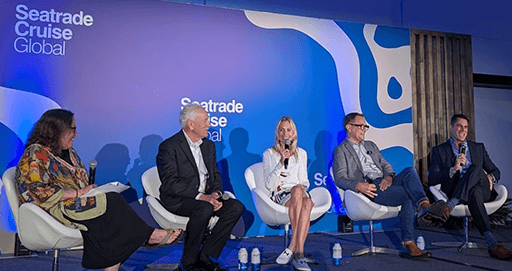Not long ago, in a fun, tongue-in-cheek way, Coyne PR predicted a baby boom based on the success of the 50 Shades of Grey book series. The press ate it up, with stories appearing on Good Morning America, ABCNews.com, Associated Press, MSNBC.com, Yahoo!, Parade.com and more. When the pandemic took hold of the U.S. last March, a lot of folks were quick to speculate that we would once again see a baby boom. But the data was telling a different story.
Sure enough, in December 2020, economists estimated a major decline of up to 300,000 fewer births this year, and health departments in more than two dozen states provided records showing a 7% drop in births nine months after the first lockdowns began. As further confirmation, according to a recently released report from the CDC, the U.S. birth rate fell 4% last year, the largest single-year decrease in nearly 50 years.
What would the declining birth rate mean for industries that are reliant on new and expectant parents? While The NPD Group reported that dollar sales for the U.S. juvenile products industry increased 6.5% in 2020 from 2019, it doesn’t look like 2021 will follow the same course. In fact, Mintel’s March 2021 Baby Durables Report notes that the pandemic continues to delay consumers from starting families, a milestone many young couples were already putting off, as they wait out uncertainties brought on by COVID-19.
So as the pool of target consumers gets smaller, companies are facing the issue of identifying and communicating with this audience in the midst of very challenging circumstances. Today’s parents have more parenting resources than ever right at their fingertips. From parenting apps and online articles with product recommendations to reading every single Amazon review before choosing whether to purchase an item, parents are using this information to make overly-informed purchasing decisions.
“Parents will always want their baby and children’s products to be of the highest quality and safe, whether they’re for the home or the car,” said Kelly Mariotti, Executive Director of the Juvenile Products Manufacturers Association (JPMA). “JPMA recommends that companies connect with new and expectant parents as early as possible to establish brand loyalty. This is a great time to take a holistic view of your business to understand the needs of today’s parents and provide real solutions.”
It’s more important than ever for brands to make sure they are reaching their target consumer on the social platforms and media outlets where they spend most of their time, and as early as possible on their parenting journey. As the leader of Coyne PR’s Juvenile Products team, I can tell you firsthand that we realize the significance of getting our clients’ products into not only the hearts and minds of expectant and new parents, but into their hands. Using everything from aggressive media outreach to micro-influencer campaigns, clients rely on us to find new ways to connect with media (thank you Zoom!) and brainstorm relevant story angles brought on by the pandemic. Following are a few ways we were able to alter our plans to make sure we continued to provide the results our clients have become accustomed to:
Virtual Desksides – In response to one of the industry’s largest trade shows of the year being canceled, we found new ways to communicate with media through virtual desksides. Not only were these a great way to show off new products, they proved to be an important way to reconnect with media who were also missing the face-to-face interaction that only a trade show can provide. Although nothing can compare to in-person events, by offering a combination of exclusive content and product sneak peeks, we were still able to garner stellar results and make lasting impressions.
Pandemic Pitch Angles – When the pandemic first reared its ugly head, we saw the media shift to reporting on more stories that could provide families with tips and strategies for dealing with quarantine. In response, we refocused our pitching efforts for a number of clients to emphasize how they could be a resource for parents and young families as they coped with what was being called the “new normal.” The goodwill that we established, though it may not have pointed directly to a product, went a long way to develop positive brand sentiment.
Influencer Campaigns – During the pandemic we also placed a renewed emphasis on reaching micro influencers. Parents tend to trust the opinions of other parents they look up to. People they think will give them an honest review, not just because they are being paid. For this reason, we’ve found micro influencer campaigns to be just as, if not more, successful than celebrity endorsements, and we’ve been incorporating them more and more into our PR plans. By getting our clients products into the hands of influencers, no matter where they are on their parenting journey, it helps generate awareness through original content posted on their social channels that is of direct interest to our target audience.
No matter how many books expectant parents read, they are never truly prepared – they adapt and learn to understand and tend to the needs of their child. Similarly, companies who were not fully prepared for the hardships brought on by the pandemic and the declining birth rate are also learning to adapt new strategies for reaching their consumers. While we (im)patiently wait for the latest 50 Shades of Grey book, Freed, to come out next month and hopefully spark another baby boom, our team will continue to work with our clients to meet the current challenges head on, reevaluate the media landscape and adjust our plans accordingly to meet our clients’ needs.




